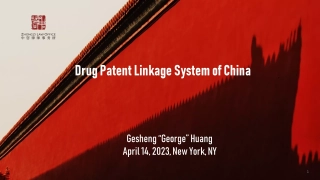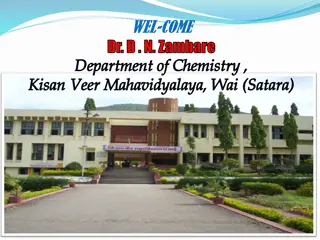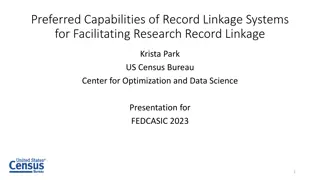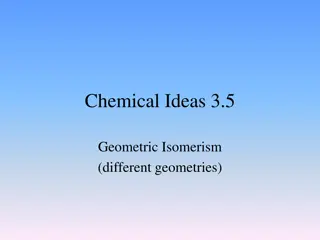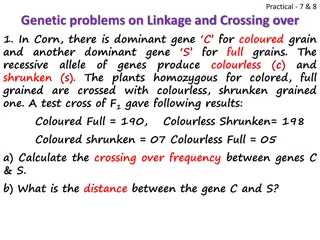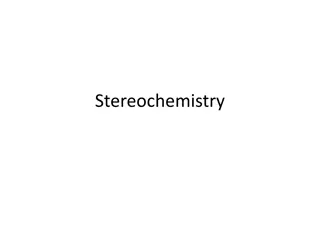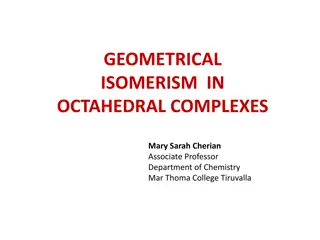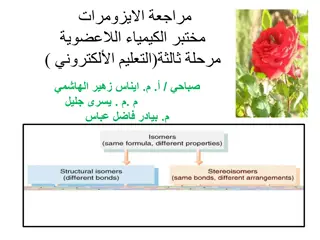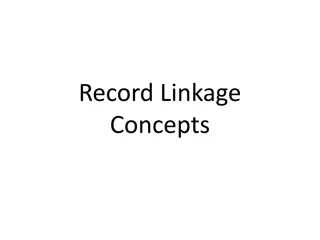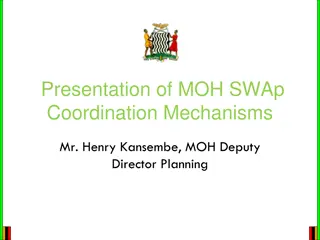Linkage Isomers in Coordination Chemistry
Coordination Chemistry, Linkage Isomers, Metal Ligand Interactions, Transition Metals
Download Presentation

Please find below an Image/Link to download the presentation.
The content on the website is provided AS IS for your information and personal use only. It may not be sold, licensed, or shared on other websites without obtaining consent from the author.If you encounter any issues during the download, it is possible that the publisher has removed the file from their server.
You are allowed to download the files provided on this website for personal or commercial use, subject to the condition that they are used lawfully. All files are the property of their respective owners.
The content on the website is provided AS IS for your information and personal use only. It may not be sold, licensed, or shared on other websites without obtaining consent from the author.
E N D
Presentation Transcript
Linkage Isomers Linkage isomer appears when the ligand has two different atoms having the ability to coordinate (i.e., the ligand has more than one donor atom); the coordination will be between the metal and the ligand via one of the two atoms and other isomer via the other atom for the same ligand, as follows: bonding via N nitro- bonding via O nitrito- bonding via S thiocyanato- bonding via N isothiocyanato- bonding via C cyano- bonding via N isocyano-
Linkage nature depends on several factors: 1) Reaction temperature. 2) Method of adding the reacted materials. 3) pH of the reaction (adding the ligand in an acidic or alkaline or neutral). 4) Metal nature and type, for instance the first transitional elements prefer linkage through nitrogen atom, while the second transitional elements prefer linkage via sulfur of oxygen.
: starting material Pentaamminechlorocobalt(III) chloride [Co(NH3)5Cl]Cl2
Preparation of Nitropentaamminecobalt(III) chloride [Co(NH3)5NO2]Cl2 Procedure: 1)Dissolve (1.25g) of the purple chloropentaaminecobalt(III) chloride complex that is previously prepared in (10ml) of distilled water in Erlenmeyer flask. 2)Add (1ml) of the concentrated Ammonia, then heat the contents with continuous stir for not less than (5) minutes. using water bath at 50oC. 3)Filter the resulted hot mixture, and neglect the sediment to get rid of insoluble part of chloropentaaminecobalt(III) chloride . 4)Cool down the filtrate at lab. Temperature, and acidize it using diluted HCl (2M) drop wise. 5)Weight (1.5g) of sodium nitrite NaNO2, and add it partially, you will notice after minutes of finishing the addition red precipitation formation, leave the mixture at lab. Temperature for not less than (5) minutes to complete precipitation. 6)Heat the mixture to dissolve the red precipitation, if did not completely dissolved; get rid of insoluble by filtration. 7)Slowly add to the filtrate the concentrated HCl drop wise for not less than 30 minutes. 8) Cool down the mixture using icy bath, you notice yellowish brown precipitation, collect it by filtration. 9) Dry the precipitation by oven, weight it, calculate its ratio, and draw its structure.
Reaction equation: [Co(NH3)5Cl]Cl2+ H2O + NH3 + HCldil.+ NaNO2 [Co(NH3)5(NO2)]Cl2 + NaCl + NH4Cl+ H2O Questions: 1) What is the medium used for preparing the isomer? 1) What is the reason behind using water bath at 50oC in the second step?
Preparation of Nitritopentaamminecobalt(III) chloride [Co(NH3)5ONO]Cl2 Procedure: 1) Dissolve (1.25g) of the purple chloro pentaaminecobalt(III) chloride complex that previously prepared in a warm mixture consists of (20) ml of distilled water and (4.5ml) of concentrated ammonia in an Erlenmeyer flask. 2) Filter the solution to get rid of insoluble chloropentaaminecobalt(III) chloride. 3) Neutralize the filtrate by adding diluted HCl (2M) drop wise, and neglect the precipitation. 4) Weight (1.2g) of sodium nitrite NaNO2, dissolve it in the solution with continuous stir. 5) Add to the product (1.2ml) of HCl (6M). 6) Leave the mixture aside to cool down to room temperature for not less than (15) minutes, so reddish orange precipitation will be formed. 7) Filter the solution and wash the precipitation with (5ml) of cold distilled water. 8) Dry the sediment by oven at 60oC for not less than 1 hr., weight it and calculate its ratio.
Reaction equation: [Co(NH3)5Cl]Cl2+ (H2O+NH3)mixture+ HCldil.+ NaNO2 [Co(NH3)5(ONO)]Cl2+ NaCl + NH4Cl+ H2O Questions: 1) What is the reason behind using the following: A. Warm mixture of concentrated ammonia and water. B. Sodium nitrite. 2) Compare between [Co(NH3)5(NO2)]Cl2 and [Co(NH3)5(ONO)]Cl2.
. 1) 2CoCl2 6H2O(s) + 2NH4Cl(s) + 10NH3(aq) + H2O2(aq) + 3H2O(l) charcoal 2) 2CoCl2 6H2O(s) + 2NH4Cl(s) + 8NH3(aq) + H2O2(aq) + 3H2O(l) ?


